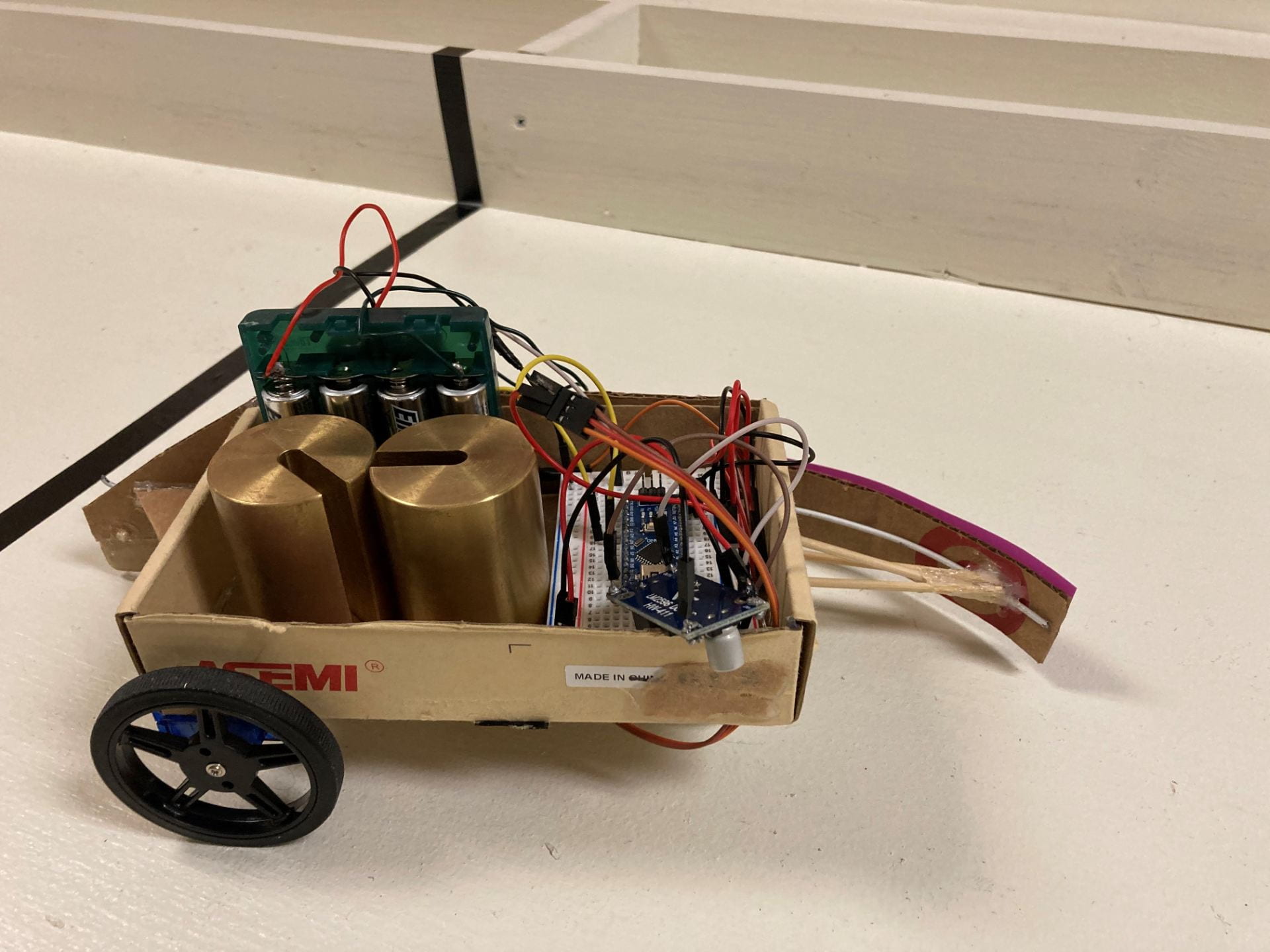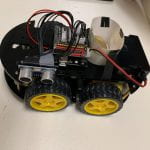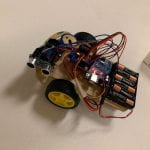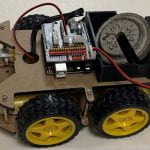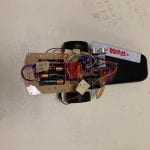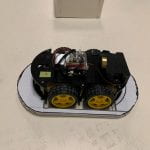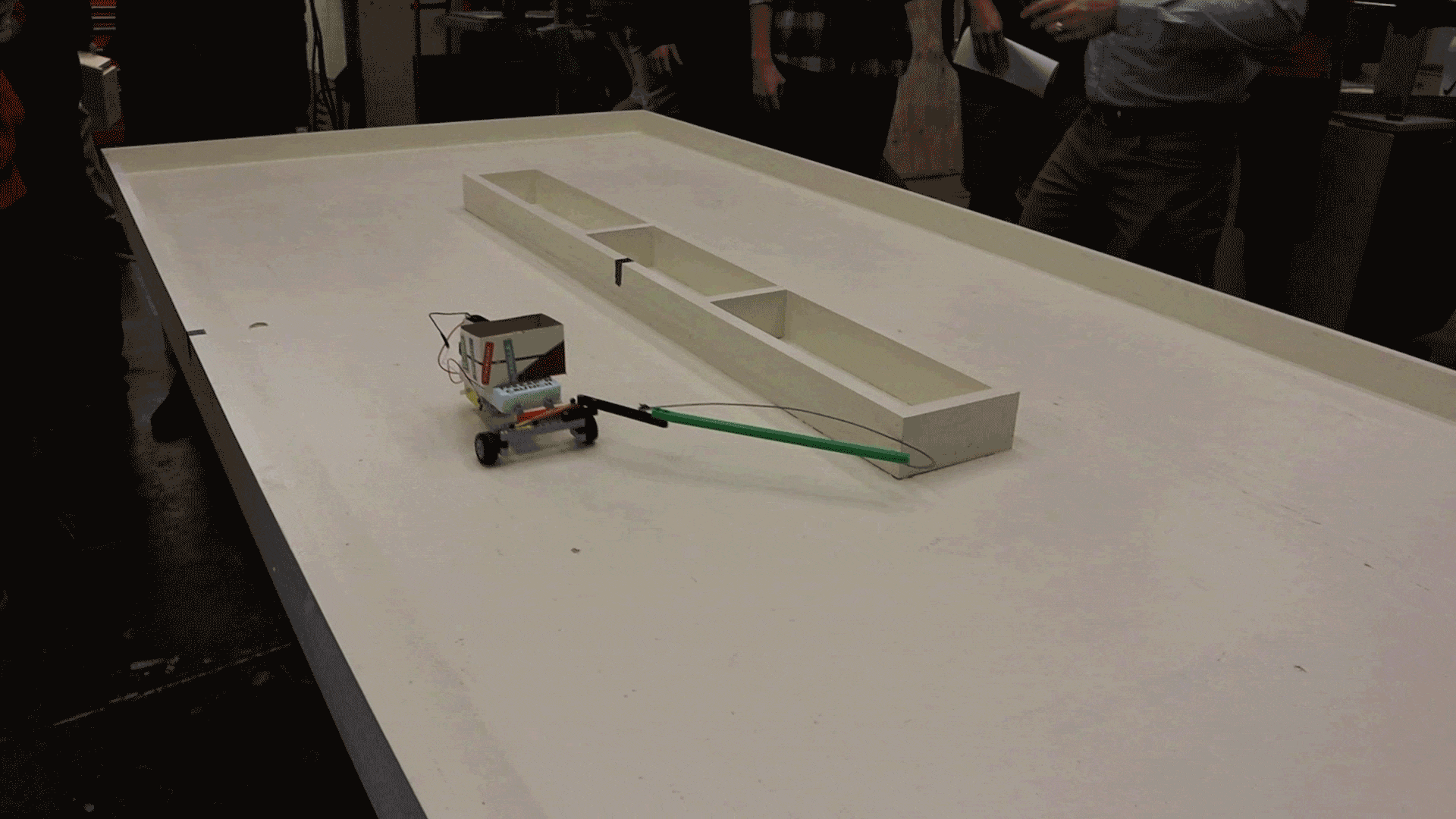This year’s senior Pre-Capstone teams were tasked with going through an extensive design process to design, build, and test an autonomous robot that could navigate around a predetermined track. This process was designed to mimic a companies design process following the required paperwork, design decisions, CAD, FEA, and ultimately working prototype.
Teams came up with one-off solutions such as 3D printed parts, wireless controlled robots, mechanical steering mechanisms, and an array of custom electrical components. This exercise helped the mechanical engineers broaden their skills and ideas while teaching students how to work through a complicated design process. The winning team as pictured above used a custom cardboard chassis to save on weight and 3D printed guide rails to keep the robot from hanging up on the wall. The team used high torque servo motors as a drive mechanism to maximize the weight they could carry while still remaining relatively fast. The video below shows the second-place team’s mechanical approach that used Legos and motors to quickly move around the track while rubbing against the wall. This team focused on using a simple solution to accomplish the same goal and minimizing design time.
All of the teams did well implementing several different design philosophies to highlight the importance of diverse ideas in engineering.
Below are the robots from other teams.
